#global greening
Text





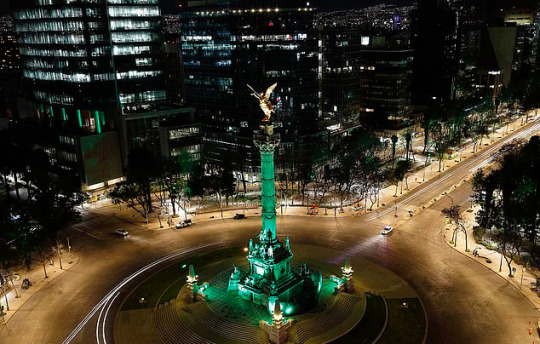




La Fhéile Pádraig Sona Duit
#global greening#La Fhéile Pádraig Sona Duit#happy st. paddy's day#get your irish on#wherever green is worn#☘️#🇮🇪
3 notes
·
View notes
Text
"With “green corridors” that mimic the natural forest, the Colombian city is driving down temperatures — and could become five degrees cooler over the next few decades.
In the face of a rapidly heating planet, the City of Eternal Spring — nicknamed so thanks to its year-round temperate climate — has found a way to keep its cool.
Previously, Medellín had undergone years of rapid urban expansion, which led to a severe urban heat island effect — raising temperatures in the city to significantly higher than in the surrounding suburban and rural areas. Roads and other concrete infrastructure absorb and maintain the sun’s heat for much longer than green infrastructure.
“Medellín grew at the expense of green spaces and vegetation,” says Pilar Vargas, a forest engineer working for City Hall. “We built and built and built. There wasn’t a lot of thought about the impact on the climate. It became obvious that had to change.”
Efforts began in 2016 under Medellín’s then mayor, Federico Gutiérrez (who, after completing one term in 2019, was re-elected at the end of 2023). The city launched a new approach to its urban development — one that focused on people and plants.
The $16.3 million initiative led to the creation of 30 Green Corridors along the city’s roads and waterways, improving or producing more than 70 hectares of green space, which includes 20 kilometers of shaded routes with cycle lanes and pedestrian paths.
These plant and tree-filled spaces — which connect all sorts of green areas such as the curb strips, squares, parks, vertical gardens, sidewalks, and even some of the seven hills that surround the city — produce fresh, cooling air in the face of urban heat. The corridors are also designed to mimic a natural forest with levels of low, medium and high plants, including native and tropical plants, bamboo grasses and palm trees.
Heat-trapping infrastructure like metro stations and bridges has also been greened as part of the project and government buildings have been adorned with green roofs and vertical gardens to beat the heat. The first of those was installed at Medellín’s City Hall, where nearly 100,000 plants and 12 species span the 1,810 square meter surface.
“It’s like urban acupuncture,” says Paula Zapata, advisor for Medellín at C40 Cities, a global network of about 100 of the world’s leading mayors. “The city is making these small interventions that together act to make a big impact.”
At the launch of the project, 120,000 individual plants and 12,500 trees were added to roads and parks across the city. By 2021, the figure had reached 2.5 million plants and 880,000 trees. Each has been carefully chosen to maximize their impact.
“The technical team thought a lot about the species used. They selected endemic ones that have a functional use,” explains Zapata.
The 72 species of plants and trees selected provide food for wildlife, help biodiversity to spread and fight air pollution. A study, for example, identified Mangifera indica as the best among six plant species found in Medellín at absorbing PM2.5 pollution — particulate matter that can cause asthma, bronchitis and heart disease — and surviving in polluted areas due to its “biochemical and biological mechanisms.”
And the urban planting continues to this day.
The groundwork is carried out by 150 citizen-gardeners like Pineda, who come from disadvantaged and minority backgrounds, with the support of 15 specialized forest engineers. Pineda is now the leader of a team of seven other gardeners who attend to corridors all across the city, shifting depending on the current priorities...
“I’m completely in favor of the corridors,” says [Victoria Perez, another citizen-gardener], who grew up in a poor suburb in the city of 2.5 million people. “It really improves the quality of life here.”
Wilmar Jesus, a 48-year-old Afro-Colombian farmer on his first day of the job, is pleased about the project’s possibilities for his own future. “I want to learn more and become better,” he says. “This gives me the opportunity to advance myself.”
The project’s wider impacts are like a breath of fresh air. Medellín’s temperatures fell by 2°C in the first three years of the program, and officials expect a further decrease of 4 to 5C over the next few decades, even taking into account climate change. In turn, City Hall says this will minimize the need for energy-intensive air conditioning...
In addition, the project has had a significant impact on air pollution. Between 2016 and 2019, the level of PM2.5 fell significantly, and in turn the city’s morbidity rate from acute respiratory infections decreased from 159.8 to 95.3 per 1,000 people [Note: That means the city's rate of people getting sick with lung/throat/respiratory infections.]
There’s also been a 34.6 percent rise in cycling in the city, likely due to the new bike paths built for the project, and biodiversity studies show that wildlife is coming back — one sample of five Green Corridors identified 30 different species of butterfly.
Other cities are already taking note. Bogotá and Barranquilla have adopted similar plans, among other Colombian cities, and last year São Paulo, Brazil, the largest city in South America, began expanding its corridors after launching them in 2022.
“For sure, Green Corridors could work in many other places,” says Zapata."
-via Reasons to Be Cheerful, March 4, 2024
#colombia#brazil#urban#urban landscape#urban planning#cities#civil engineering#green architecture#green spaces#urban heat#urban heat island effect#weather#meteorology#global warming#climate change#climate hope#climate optimism#climate emergency#climate action#environment#environmental news#city architecture#bicycling#native plants#biodiversity#good news#hope#solarpunk#ecopunk#hopepunk
14K notes
·
View notes
Text
Article of Global Greening and Trillion Trees Initiative - March 2023
Here is another project work for all friends of nature from our lovely Greening Deserts founder explaining the importance of global greening for humanity and all other species. Nature and the forces of nature have supported the creation of this text, a person very connected to nature has written it. This article deals with the most important processes for all life and the biosphere on planet Earth - the global greening process and urban greening. It is written in English and in a very simple language to make it easier to understand. The article and very important paper is also translated into many other languages to understand some things even better. First we will look at the concept and terms, later different functions, meanings, possibilities and potentials.
Global greening and regreening is the process of restoring natural ecosystems and increasing the amount of green space on the planet. This involves reforestation, increasing the amount of vegetation in cities, and other measures to increase the amount of green cover on the land. Global greening is important for a variety of reasons, including providing habitats for wildlife, reducing air and water pollution, and mitigating the effects of climate change. It also provides an important source of food, fuel, and fiber for many people around the world. There is human-made greening and natural greening, you can build your own opinion – but read more to understand bad, good and other sides or aspects. Green is not always green, most people should finally understand, because if we talk about green we mean mostly nature, environmental friendly things or just green colors – but nature is not just green and blue like most of the 'experts' and media try to tell you. It is much more and to bring some colours and diversity into these topics Greening Deserts started the Global Greening and Trillion Trees Initiative some years ago.
Global greening efforts can be undertaken by businesses, governments and individuals in many countries. It is a continuous work and long-term investment that can have positive effects on both, our economy and environment. With the right plans and policies in place, global greening efforts can help to reduce poverty, improve public health and create a more equitable world for everyone – it even can accelerate the global cooling and peace process. Governments can invest in real sustainable reforestation projects and green initiatives to help to reduce man-made climate change impacts and provide healthier environments or habitats for their citizens and also all other humans worldwide. Businesses who do or support global greening solutions and invest in green technologies, renewable energy sources, cleantech or greentech can reduce the carbon footprint or emissions, pollution and increase their sustainability. Individuals can also taking part by planting trees, reducing energy consumption, much waste and start advocating for greener or more sustainable solutions.
Global greening is an important part of creating a better and greener future on planet Earth along with all life forms. To re-green and reforest the biosphere, nature is our greatest ally, everyone else who thinks they or their partners are or have "the solution" are lying. You can read here the best, only and really true solution - nature and many will prove it to you, as so many times before. Read more now about how the Global Greening organization began as a private and collaborative project, how it became a worldwide movement and finally an institution.
The Global Greening Project and future organization was founded many years ago as the main project of the Greening Deserts and Trillion Trees Initiative. The founder published many articles, innovative ideas and papers about the regreening and reforestation movement. GlobalGreening.org is and will be the main platform in the future, also for the development organization. The project is linked to Greening Deserts developments such as the global Greening Camps. It has long been a private initiative as part of the Trillion Trees Project. The Global Greening Institution wants to build an additional platform for Southern Europe and Africa, including the Drought Research Institute with its online platform DroughtResearch.com. With real active and financial support, the Global Greening Institute will also build a real building with the first nations that will really support us this year and have supported us in the first days - the Greening Campus and Institute can be built at any major Greening Camp still in the first year! All the organizations that have supported us financially will also be the main partners or sponsors, depending on the form and amount of support they have provided. They will make world history (or not) and some have even already made it, because historical archives, libraries and universities have stored a lot of background and information sent to them.
Global greening is one of the most important goals and tasks of humanity that can be achieved through a combination of cultural, individual, regional, societal and international efforts. Together we humans can restore our natural ecosystems, reduce negative climate change effects or harmful man-made influences on nature and create a better future for us and planet Earth. There are a number of general and potential solutions for global greening like explained in this article. Most of them can be implemented at a local, regional, national and global level. Read also more on our project and network pages to understand the complexity and connections.
Before continuing with the main topics of the article, the Global Greening and Trillion Trees Initiative initiators are proud to announce some really great news! We have planned tree planting campaigns for 58 billion trees in North, East and West Africa - many tree species should be African, native or indigenous and endangered species, we hope international experts will also help us with this. Some countries where greening camps were started years ago will of course be included, such as Algeria, Ghana, Kenya, Rwanda, Tanzania and Uganda - of course, only if the governments allow and support it. Responsible people of all affected regions will be included, informed and asked for support, especially before tree planting activities will begin.
For more diverse trees and plants in northern regions we plan to cultivate and share also many species of marshlands, moor-, swamp- and wetlands. The focus is on wet forests but also on woods and many single trees in tundra landscapes. The plan is to plant up to 100 billion trees in taiga and tundra regions, this will also help to cool down the regions, prevent permafrost thawing and higher methane releases! Each day counts and we hope the northern nations will support us fast as possible to build the first greening and ecosystem restoration camps there.
Another good news is that we plan tree planting actions, campaigns and greening camps for 42 billion native Australian trees like the methane composting or storage trees. More tree species will be planted of course, not just in Australia but also in South Asia. The MethaneStorage and WetForest.org projects are also part of the global greening process and to establish more healthier and resilent ecosystems who can store and transform more greenhouse gases! More wet forests and wetlands with trees are essential to reduce warming of forests and wetlands, to prevent dry forest soils and methane storage capacities. Check Greening Deserts articles and posts or tweets of the Trillion Trees Initiative and @TrillionTreesEU, too.
Understand why global greening is so important for all life on planet Earth and what vertical farming and urban greening can do to improve global greening efforts.
Global Greening is a term used to describe the process of increasing vegetation cover and plant growth across the planet. One of the main causes of global greening is the rising levels of carbon dioxide in the atmosphere due to human activities such as the burning of fossil fuels. Carbon dioxide is an important nutrient for plants, and higher concentrations in the atmosphere have led to increased growth and expansion of forests and vegetation around the world. Despite the positive effects of global greening, deforestation remains a significant problem, particularly in regions such as the Amazon rainforest and Indonesia, where large areas of forest are being cleared for agriculture, mining and other forms of industrial or problematic developments. Deforestation has serious environmental consequences, leading to biodiversity loss, increased carbon and methane emissions, soil erosion and land degradation. The opposite of Global Greening is Global Browning, a process that is unfortunately increasing rapidly every year.
Vertical Farming is an innovative agricultural technique that involves growing crops in vertically stacked layers using artificial light and controlled environmental conditions. Vertical farms can be set up in urban areas and can produce high volumes of crops and trees without requiring large amounts of land or water.
Vertical farming can contribute to global greening and reforestation in several ways. First, it can help reduce pressure on natural forests and ecosystems by providing an alternative source of food and resources. Second, it can increase overall vegetation in urban areas, which can help mitigate the effects of urban heat islands and provide a number of other benefits, such as improved air quality and reduced noise pollution. Vertical farming is the future of efficient and sustainable agriculture for urban areas. It can help combat climate change by reducing the carbon footprint and harmful impacts of conventional agriculture. By growing crops locally and using energy-efficient technologies, vertical farming can significantly reduce the carbon emissions associated with transporting food long distances and producing it using conventional farming methods. By using urban land such as rooftops and walls for agriculture, cities can increase their food security while reducing their carbon emissions. For example, rooftop gardens and urban greenhouses can provide fresh produce to local communities, reduce the urban heat island effect, and capture rainwater that can be used to irrigate crops.
Many of these reasons were also a factor why Greening Deserts has been developing concepts and projects like the Urban Greening Camp for years. Innovative methods and techniques have been further developed as well as interesting Vertical Farming developments have been shared with the society - also regionally and internationally. Since 2016, three advanced types of greening facilities have been developed, the main facilities are Greening Camps for land sites with agroforestry, agrovoltaics, greenhouses and nursery.
Rainwater or seawater treatment plants, solar and wind energy will provide the needed energy - more energy can be stored in energy storage parks and converted to hydrogen. The second type is a model urban greening facility, the concept of Urban Greening facility includes extended Vertical Farming concepts, Cleantech and Greentech developments and in principle can be established in any major city as a specialized nursery for city and people. These concepts are unique and have been published several times by Greening Deserts founders on different networks and sites!
The vision is that all major regions affected by deforestation, desertification, and land degradation can use these camps to do reforestation, regreening or revegetation, soil improvement and freshwater harvesting faster and more efficiently than any other solution ever. Copying the concepts only confirms that Greening Deserts' developments work. The best thing would be to ask and involve the founder, together we can improve and develop Greening Camps much further, even to the Moon and Mars - just kidding, but the reality is that the world could use thousands of such facilities to really reduce and then stop man-made desertification and land degradation! We must ask ourselves why officials and responsible people or organizations who know this since years still do not support Greening Deserts? This ignorance is not only killing the environment and many life forms every year, it will destroy all humanity! Time is running out, every day counts.
Here come some more important points about why urban greening and global greening are so important to all of us - and why they are the only big, comprehensive or realistic global solution to urban greening, global greening and cooling. The article is written in very simple and english language that even children can understand.
Urban greening, ecological forestry, and sustainable cropping solutions such as agroforestry and regenerative agriculture are important components of global greening efforts. These approaches can help increase vegetation cover, restore degraded ecosystems, and mitigate the effects of climate change.
Urban greening refers to increasing vegetation cover in urban areas. This includes planting trees, creating green spaces, and using green roofs and walls. Urban greening has several benefits such as improving air quality, reducing the heat island effect, and increasing biodiversity. Urban greening can provide a source of food and other resources, which can help reduce pressure on natural ecosystems. It has a positive impact on biodiversity and provides more healthy habitats for people and a variety of animal and plant species - similar to the concept of allotment gardens developed in Leipzig. All of these measures help create more green spaces that can provide important habitat for many native species, especially insects and pollinators such as bees, butterflies and wasps.
Ecological forestry or ecoforestry, is an approach to forest management that aims to balance environmental, social, and economic goals. Ecoforestry focuses on preserving natural ecosystems, using sustainable harvesting techniques, and involving local communities in forest management. Ecoforestry can help maintain and restore forest ecosystems that are critical for carbon sequestration, biodiversity, and the provision of ecosystem services.
Agroforestry is an agricultural technique that combines growing trees with cropping or raising livestock. This approach can help increase soil fertility, reduce erosion, and provide farmers with a source of income. By planting trees in and around cropland, farmers can improve soil health by increasing soil organic matter and improving soil water-holding capacity. Trees can also provide shade and windbreaks for crops, which can lead to reduced water use and increased crop yields. Agroforestry can also contribute to global greening by increasing vegetation cover and restoring degraded lands. Agroforestry and regenerative agriculture can also help improve the health and resilience of soil ecosystems. Through the use of crop rotations, cover crops, and natural fertilizers, these approaches can improve soil fertility and reduce the need for synthetic fertilizers and pesticides. This can help reduce the environmental impact of agriculture and promote the long-term sustainability of food production.
Regenerative agriculture is an agricultural approach that focuses on restoring soil health and using sustainable agricultural practices. Regenerative agriculture can help increase soil carbon sequestration, reduce greenhouse gas emissions, and improve biodiversity. This approach can also contribute to global greening by increasing vegetation cover and restoring degraded lands.
One of the most important benefits of regenerative agriculture is its potential to sequester large amounts of carbon in the soil. Carbon sequestration refers to the process of taking up and storing carbon from the atmosphere in plants and soils. By increasing the amount of organic matter in the soil, regenerative agriculture can help store large amounts of carbon, which in turn can mitigate the effects of climate change. Together with agroforestry and vertical farming, these are the best sustainable farming practices that can contribute greatly to global greening, healing and re-greening.
Another important factor to consider in global greening efforts is the role of technologies. Advances in technology have the potential to significantly improve sustainable land use practices, including urban greening, ecological forestry, agroforestry, and regenerative agriculture. For example, precision agriculture technologies can be used to optimize crop yields while reducing fertilizer and water use, promoting sustainable land use practices. Similarly, remote sensing technologies can be used to monitor and map changes in forest cover and land use, providing valuable information for forest management and conservation. It is important to recognize that the use of some technologies in global greening efforts should be approached with caution. While some of the technologies have the potential to improve sustainable land use practices, they can also have negative impacts on the environment and society. For example, the use of genetically modified crops can lead to the loss of genetic diversity and the emergence of new pests and diseases. The use of technology in global greening and green developments, honest climate and environmental protection should be led by really good experts and responsible scientists, especially those with strong ethical and legal frameworks - like the Scientists for Global Responsibility. This includes policies and regulations that promote the safe and responsible use of technologies and the protection of biodiversity and ecosystems.
Global Greening must not be misused for Greenwashing or Treewashing, as it has unfortunately already happened with many tree planting and environmental protection campaigns. You only have to search the media and the internet for terms like 30x30, Carbon Credits, Green Colonialism, Greenwashing, Land Grabbing, Net Zero and New Green Deal or Nature Positive and you will find a lot of scandals and scarry backgrounds. Read also more about all the problems with carbon credits, which even made the global situation immensely worse. The same goes for biodiversity credits and the idea of financialization of nature and a nature market - another bad idea of certain actors from the UK, London or the Bank of England and Wall Street. Such ideas and concepts can not only cause more damage and destruction to the biosphere, but also accelerate mass extinction, pollution and the sellout of nature. The European Union and United Nations is primarily responsible and has the biggest responsibility to reverse and stop these trends.
Urban greening, ecological forestry, and sustainable agricultural solutions such as agroforestry, permaculture, regenerative agriculture, and vertical farming are important components of global greening efforts.
These main solutions can help increase healthier and more natural vegetation, restore degraded ecosystems, and mitigate the effects of climate change. By combining these approaches with other measures such as reducing greenhouse gas emissions and promoting sustainable development, humanity may be able to stop accelerating global warming, biodiversity loss, and mass extinctions before it is too late - around the year 2030? It is no joke and very serious, some tipping points have already been passed and any further tipping point is likely to trigger cascading effects that cannot be stopped by human action!
Most developments require a holistic approach that takes into account the
social, cultural, economic and environmental dimensions of
sustainability. This also requires collaboration and partnership among various stakeholders, including governments, civil society, the private sector, and local communities. For this reason, Greening Deserts would like to establish the GlobalGreening organization with a extra international platform that involves indigenous and local regions affected by the aforementioned issues and in need of professional support. With adequate and financial support from each government and the United Nations, we could finally continue important developments, infrastructures and platforms for the global Greening Camp(s), Trillion Trees Initiative,.... We also want to establish a special commission or team on Human Rights and Indigenous Peoples to better communicate and share on all important issues so we can work more efficiently and achieve the best results.
It is important to recognize the role that indigenous communities and local people play in global environmental efforts. Many of these communities have traditional knowledge and practices that can promote sustainable land use and provide valuable insights into truly healthy as well as natural revegetation processes. In the Amazon rainforest, for example, indigenous communities have long practiced agroforestry and other sustainable land use practices that promote biodiversity and soil fertility. By working with these communities and incorporating their traditional knowledge into global revegetation and greening efforts, it is possible to promote sustainable land use and conserve biodiversity while supporting the livelihoods of local people. In Africa, for example, traditional agroforestry practices have been used for centuries to promote soil fertility, reduce erosion, and support food security. By incorporating these practices, it is possible to promote sustainable agriculture and support local communities.
Community forest management initiatives can promote sustainable forest management while supporting the livelihoods of local communities. Similarly, participatory plant breeding programs can promote the development of locally adapted crop varieties and support the resilience of smallholder farmers. Many of these truly highly efficient, innovative, and sustainable solutions also often manage water issues, water balance, and avoid many water problems.
Wetlands, rivers and forests are the greatest air and water filters or purifiers, including with respect to many pollutants. In addition, forests are the largest freshwater reservoirs in the world! So expanding and establishing more forested areas or even completely new forests not only ensures these important ecosystem services like water storage and supply, it also contributes to regional climate regulation and food security. More on this in further articles
Global greening efforts can be more successful if the root causes of deforestation and land degradation are addressed. This includes addressing the causes of deforestation, such as agricultural expansion, mining, and infrastructure development. It also requires addressing the underlying social and economic issues that contribute to unsustainable land use practices, such as poverty, lack of access to education, health care, water, and other essential resources. Corruption, ignorance and political instability, poor governance or management are other important factors. Without addressing and resolving all of these factors in the right way, it is very difficult or even impossible to truly change the problems mentioned. Corruption, lack of will, lack of support and lack of understanding are perhaps the biggest problem of our time - making everything worse and driving humanity into the conflicts and wars we see today. You can read more details about these problems and really effective solutions like peace consolidation or peace building in the other articles. There will be another article soon about global greening, peacebuilding and innovative solutions that can really improve everything. It depends of course on you and many people around the world to recognize, communicate and convince your local people or national government to finally understand the real causes and sustainable solutions, to focus on solving the root causes and not fight symptoms or windmills! Honest, sustainable and environmentally conscious actions, sustainable consumption and lifestyles should be taken more seriously by all and thus also contribute to a better society and healthier world. Global Greening, Sustainable Living, sustainable consumption, production and working worldwide as well as the realization of real changes should be terms and changes of the year 2023 and upcoming years.
If more people work together and harness the power of good technology and social innovation, we can create a more sustainable and resilient future for ourselves and all life on the planet. It is also very important to consider the role of social developments and innovations in global greening efforts. Social innovation, truly sustainable developments, and the implementation of new solutions to social and environmental challenges can improve many things if people accept them, believe in them, or understand them. Engaging communities and civil society is one of the main tasks, like Greening Deserts' public and social work, which you can see on the social and project pages.
Another important topic to understand the big picture is the forms of financing and real good money. It is one of the last main topics of this article and will show that money is important, but only one factor - and that many of the global greening and/or other greening factors mentioned do not directly need money - and if they do, proper forms of financing or financial support. Most people misunderstand money, the function and types of finance or financing.
Sustainable financing models and greener forms of financing can be a critical component of ecological and global greening efforts. Transitioning to more sustainable land use practices often requires significant investments in infrastructure, technology, research and development, and capacity building. These investments are critical to promoting sustainable development and mitigating the impacts of climate change, but require significant and sustained financial resources. Funding for global greening and/or other greening efforts can come from a variety of sources, including government budgets, private sector investment, international aid, and philanthropic funds. For example, many countries have established climate or environmental funds to support investments in sustainable land use practices and climate mitigation and adaptation. Private sector investment can play a critical role in financing sustainable land use practices. Investment vehicles that finance projects with environmental benefits, have become an increasingly popular way for companies to finance sustainable development initiatives.
Ensuring that more funding goes to projects and initiatives that have a positive impact on the environment and society. This requires strong environmental and social safeguards, as well as robust monitoring and evaluation mechanisms that ensure accountability and transparency. Funding should be targeted to the most vulnerable and marginalized societies, depending on the business, project, and region. These communities often bear the brunt of environmental degradation and climate change impacts and may not have the resources and capacity to implement sustainable land use practices on their own. Greening Deserts therefore calls for the funding of many greening programs or projects to be designed and determined to promote equity and social justice, prioritizing the needs of the most vulnerable and marginalized communities. These communities often bear the brunt of environmental degradation and climate change impacts and may not have the resources and capacity to implement sustainable land use practices on their own.
Global greening, revegetation, and reforestation also have important implications for human health and well-being. True forests, healthy ecosystems, and green infrastructure provide important ecosystem functions and services that are critical to human health, including clean air and water, food security, and protection from natural disasters. Afforestation and reforestation can provide economic benefits, especially to local communities, if they are long-term and truly sustainable. Forests and other natural resources can provide a source of income and employment for communities through activities such as agroforestry courses, ecotourism, and the sale of non-timber forest products. This can help promote economic development and reduce poverty, especially in rural areas and countries that need better income for their rural residents.
Regarding the potential benefits of global greening, revegetation, and reforestation, it should be noted that these processes can provide a range of ecosystem services beyond carbon sequestration. For example, forests can help regulate water flow and prevent soil erosion, which can be particularly important in areas prone to flooding or drought. Forests can also promote biodiversity by providing habitat for threatened or endangered species, among other things. In addition, reforestation and revegetation can help restore degraded land and increase its productivity, which can be important for food security and livelihoods. It is important to prioritize the promotion of diverse and sustainable reforestation and revegetation practices that address the needs and perspectives of local communities. We have shown many examples on our pages and on platforms like Twitter - most of which are very successful.
Some Greening Deserts projects and developments are new, others are very creative, but most of them are based on ancient or traditional methods of indigenous cultures that still function as they did many thousands of years ago. It is not just about the knowledge and history of indigenous peoples, but also about their contribution to global health and the fact that they protect about 80% of the world's biodiversity. It is sad that so many people, and especially governments and some of the United Nations, still ignore these facts and carry on as before. In the end, one question will open your eyes. Did you know that ecological forestry, aquaponics, hydroponics, permaculture and even the main factors of vertical agriculture were invented by indigenous peoples - just like soccer? If you know such background and history, you may understand why indigenous peoples are so important to biodiversity conservation, ecosystem restoration, environmental health, and the global greening process - which we, the Greening Deserts community, have been promoting and supporting for years.
Short Abstract: Global greening works and efforts are essential for promoting sustainable development and mitigating the effects of climate change. Urban greening, ecological forestry, agroforestry, regenerative agriculture, and vertical farming are important components of a comprehensive strategy to promote sustainable land use practices, sustainable ways of living, producing, and working. These approaches need to be complemented by the use of truly effective and sustainable technologies, policies and regulations that promote sustainability, social innovation, international collaboration, and financing. If we all work together more and engage with civil society, we can create a more sustainable and resilient future for our planet. This is what Greening Deserts, projects and communities have been trying to do for many years - with much success, but also with many problems created by crises, pandemics and wars in Europe caused by some people. Especially ignorant and corrupt politicians, corruption and ignorance of certain authorities, organizations and institutions up to the highest offices or functions are main causes and problems which should be addressed by all people - especially in the EU and UN!
More important contributions and messages of Global Greening and Trillion Trees Initiative in 2022 and 2023:
Author description:
Greening Deserts founder wrote a new article for the Global Greening and Trillion Trees Initiative who runs actions, campaigns and projects to accelerate and support regreening and reforestation worldwide. The main projects can be reached by globalgreening.org and trilliontrees.in.
1 note
·
View note
Text
Global Greening and Trillion Trees Initiative for faster reforestation and regreening of planet Earth
Article and News of March 2023
Here is another project work for all friends of nature explaining the importance of global greening for humanity and all other species. Nature and the forces of nature have supported the creation of this text, a person very connected to nature has written it. This article deals with the most important processes for all life and the biosphere on planet Earth - the global greening process and urban greening. It is written in English and in a very simple language to make it easier to understand. The article and very important paper is also translated into many other languages to understand some things even better. First we will look at the concept and terms, later different functions, meanings, possibilities and potentials.
Global greening and regreening is the process of restoring natural ecosystems and increasing the amount of green space on the planet. This involves reforestation, increasing the amount of vegetation in cities, and other measures to increase the amount of green cover on the land. Global greening is important for a variety of reasons, including providing habitats for wildlife, reducing air and water pollution, and mitigating the effects of climate change. It also provides an important source of food, fuel, and fiber for many people around the world. There is human-made greening and natural greening, you can build your own opinion – but read more to understand bad, good and other sides or aspects. Green is not always green, most people should finally understand, because if we talk about green we mean mostly nature, environmental friendly things or just green colors – but nature is not just green and blue like most of the 'experts' and media try to tell you. It is much more and to bring some colours and diversity into these topics Greening Deserts started the Global Greening and Trillion Trees Initiative some years ago.
Global greening efforts can be undertaken by businesses, governments and individuals in many countries. It is a continuous work and long-term investment that can have positive effects on both, our economy and environment. With the right plans and policies in place, global greening efforts can help to reduce poverty, improve public health and create a more equitable world for everyone – it even can accelerate the global cooling and peace process. Governments can invest in real sustainable reforestation projects and green initiatives to help to reduce man-made climate change impacts and provide healthier environments or habitats for their citizens and also all other humans worldwide. Businesses who do or support global greening solutions and invest in green technologies, renewable energy sources, cleantech or greentech can reduce the carbon footprint or emissions, pollution and increase their sustainability. Individuals can also taking part by planting trees, reducing energy consumption, much waste and start advocating for greener or more sustainable solutions.
Global greening is an important part of creating a better and greener future on planet Earth along with all life forms. To re-green and reforest the biosphere, nature is our greatest ally, everyone else who thinks they or their partners are or have "the solution" are lying. You can read here the best, only and really true solution - nature and many will prove it to you, as so many times before. Read more now about how the Global Greening organization began as a private and collaborative project, how it became a worldwide movement and finally an institution.

The Global Greening Project and future organization was founded many years ago as the main project of the Greening Deserts and Trillion Trees Initiative. The founder published many articles, innovative ideas and papers about the regreening and reforestation movement. GlobalGreening.org is and will be the main platform in the future, also for the development organization. The project is linked to Greening Deserts developments such as the global Greening Camps. It has long been a private initiative as part of the Trillion Trees Project. The Global Greening Institution wants to build an additional platform for Southern Europe and Africa, including the Drought Research Institute with its online platform DroughtResearch.com. With real active and financial support, the Global Greening Institute will also build a real building with the first nations that will really support us this year and have supported us in the first days - the Greening Campus and Institute can be built at any major Greening Camp still in the first year! All the organizations that have supported us financially will also be the main partners or sponsors, depending on the form and amount of support they have provided. They will make world history (or not) and some have even already made it, because historical archives, libraries and universities have stored a lot of background and information sent to them.
Global greening is one of the most important goals and tasks of humanity that can be achieved through a combination of cultural, individual, regional, societal and international efforts. Global greening is also global cooling and promotes or supports peacebuilding and peacekeeping. People in a healthier and greener environment are more peaceful and healthy. Together we humans can restore our natural ecosystems, reduce negative climate change effects or harmful man-made influences on nature and create a better future for us and planet Earth. There are a number of general and potential solutions for global greening like explained in this article. Most of them can be implemented at a local, regional, national and global level. Read also more on our project and network pages to understand the complexity and connections.
Before continuing with the main topics of the article, the Global Greening and Trillion Trees Initiative initiators are proud to announce some really great news! We have planned tree planting campaigns for 58 billion trees in North, East and West Africa - many tree species should be African, native or indigenous and endangered species, we hope international experts will also help us with this. Some countries where greening camps were started years ago will of course be included, such as Algeria, Ghana, Kenya, Rwanda, Tanzania and Uganda - of course, only if the governments allow and support it. Responsible people of all affected regions will be included, informed and asked for support, especially before tree planting activities will begin.
For more diverse trees and plants in northern regions we plan to cultivate and share also many species of marshlands, moor-, swamp- and wetlands. The focus is on wet forests but also on woods and many single trees in tundra landscapes. The plan is to plant up to 100 billion trees in taiga and tundra regions, this will also help to cool down the regions, prevent permafrost thawing and higher methane releases! Each day counts and we hope the northern nations will support us fast as possible to build the first greening and ecosystem restoration camps there.
Another good news is that we plan tree planting actions, campaigns and greening camps for 42 billion native Australian trees like the methane composting or storage trees. More tree species will be planted of course, not just in Australia but also in South Asia. The MethaneStorage and WetForest.org projects are also part of the global greening process and to establish more healthier and resilent ecosystems who can store and transform more greenhouse gases! More wet forests and wetlands with trees are essential to reduce warming of forests and wetlands, to prevent dry forest soils and methane storage capacities. Check Greening Deserts articles and posts or tweets of the Trillion Trees Initiative and @TrillionTreesEU, too. Understand why global greening is so important for all life on planet Earth and what vertical farming and urban greening can do to improve global greening efforts.
Global Greening is a term used to describe the process of increasing vegetation cover and plant growth across the planet. One of the main causes of global greening is the rising levels of carbon dioxide in the atmosphere due to human activities such as the burning of fossil fuels. Carbon dioxide is an important nutrient for plants, and higher concentrations in the atmosphere have led to increased growth and expansion of forests and vegetation around the world. Despite the positive effects of global greening, deforestation remains a significant problem, particularly in regions such as the Amazon rainforest and Indonesia, where large areas of forest are being cleared for agriculture, mining and other forms of industrial or problematic developments. Deforestation has serious environmental consequences, leading to biodiversity loss, increased carbon and methane emissions, soil erosion and land degradation. The opposite of Global Greening is Global Browning, a process that is unfortunately increasing rapidly every year.
Vertical Farming is an innovative agricultural technique that involves growing crops in vertically stacked layers using artificial light and controlled environmental conditions. Vertical farms can be set up in urban areas and can produce high volumes of crops and trees without requiring large amounts of land or water.
Vertical farming can contribute to global greening and reforestation in several ways. First, it can help reduce pressure on natural forests and ecosystems by providing an alternative source of food and resources. Second, it can increase overall vegetation in urban areas, which can help mitigate the effects of urban heat islands and provide a number of other benefits, such as improved air quality and reduced noise pollution. Vertical farming is the future of efficient and sustainable agriculture for urban areas. It can help combat climate change by reducing the carbon footprint and harmful impacts of conventional agriculture. By growing crops locally and using energy-efficient technologies, vertical farming can significantly reduce the carbon emissions associated with transporting food long distances and producing it using conventional farming methods. By using urban land such as rooftops and walls for agriculture, cities can increase their food security while reducing their carbon emissions. For example, rooftop gardens and urban greenhouses can provide fresh produce to local communities, reduce the urban heat island effect, and capture rainwater that can be used to irrigate crops.
Many of these reasons were also a factor why Greening Deserts has been developing concepts and projects like the Urban Greening Camp for years. Innovative methods and techniques have been further developed as well as interesting Vertical Farming developments have been shared with the society - also regionally and internationally. Since 2016, three advanced types of greening facilities have been developed, the main facilities are Greening Camps for land sites with agroforestry, agrovoltaics, greenhouses and nursery. Rainwater or seawater treatment plants, solar and wind energy will provide the needed energy - more energy can be stored in energy storage parks and converted to hydrogen. The second type is a model urban greening facility, the concept of Urban Greening facility includes extended Vertical Farming concepts, Cleantech and Greentech developments and in principle can be established in any major city as a specialized nursery for city and people. These concepts are unique and have been published several times by Greening Deserts founders on different networks and sites!
The vision is that all major regions affected by deforestation, desertification, and land degradation can use these camps to do reforestation, regreening or revegetation, soil improvement and freshwater harvesting faster and more efficiently than any other solution ever. Copying the concepts only confirms that Greening Deserts' developments work. The best thing would be to ask and involve the founder, together we can improve and develop Greening Camps much further, even to the Moon and Mars - just kidding, but the reality is that the world could use thousands of such facilities to really reduce and then stop man-made desertification and land degradation! We must ask ourselves why officials and responsible people or organizations who know this since years still do not support Greening Deserts? This ignorance is not only killing the environment and many life forms every year, it will destroy all humanity! Time is running out, every day counts.
Here come some more important points about why urban greening and global greening are so important to all of us - and why they are the only big, comprehensive or realistic global solution to urban greening, global greening and cooling. The article is written in very simple and english language that even children can understand.
Urban greening, ecological forestry, and sustainable cropping solutions such as agroforestry and regenerative agriculture are important components of global greening efforts. These approaches can help increase vegetation cover, restore degraded ecosystems, and mitigate the effects of climate change. Urban greening refers to increasing vegetation cover in urban areas. This includes planting trees, creating green spaces, and using green roofs and walls. Urban greening has several benefits such as improving air quality, reducing the heat island effect, and increasing biodiversity. Urban greening can provide a source of food and other resources, which can help reduce pressure on natural ecosystems. It has a positive impact on biodiversity and provides more healthy habitats for people and a variety of animal and plant species - similar to the concept of allotment gardens developed in Leipzig. All of these measures help create more green spaces that can provide important habitat for many native species, especially insects and pollinators such as bees, butterflies and wasps.
Ecological forestry or ecoforestry, is an approach to forest management that aims to balance environmental, social, and economic goals. Ecoforestry focuses on preserving natural ecosystems, using sustainable harvesting techniques, and involving local communities in forest management. Ecoforestry can help maintain and restore forest ecosystems that are critical for carbon sequestration, biodiversity, and the provision of ecosystem services.
Agroforestry is an agricultural technique that combines growing trees with cropping or raising livestock. This approach can help increase soil fertility, reduce erosion, and provide farmers with a source of income. By planting trees in and around cropland, farmers can improve soil health by increasing soil organic matter and improving soil water-holding capacity. Trees can also provide shade and windbreaks for crops, which can lead to reduced water use and increased crop yields. Agroforestry can also contribute to global greening by increasing vegetation cover and restoring degraded lands. Agroforestry and regenerative agriculture can also help improve the health and resilience of soil ecosystems. Through the use of crop rotations, cover crops, and natural fertilizers, these approaches can improve soil fertility and reduce the need for synthetic fertilizers and pesticides. This can help reduce the environmental impact of agriculture and promote the long-term sustainability of food production.
Regenerative agriculture is an agricultural approach that focuses on restoring soil health and using sustainable agricultural practices. Regenerative agriculture can help increase soil carbon sequestration, reduce greenhouse gas emissions, and improve biodiversity. This approach can also contribute to global greening by increasing vegetation cover and restoring degraded lands. One of the most important benefits of regenerative agriculture is its potential to sequester large amounts of carbon in the soil. Carbon sequestration refers to the process of taking up and storing carbon from the atmosphere in plants and soils. By increasing the amount of organic matter in the soil, regenerative agriculture can help store large amounts of carbon, which in turn can mitigate the effects of climate change. Together with agroforestry and vertical farming, these are the best sustainable farming practices that can contribute greatly to global greening, healing and re-greening.
Another important factor to consider in global greening efforts is the role of technologies. Advances in technology have the potential to significantly improve sustainable land use practices, including urban greening, ecological forestry, agroforestry, and regenerative agriculture. For example, precision agriculture technologies can be used to optimize crop yields while reducing fertilizer and water use, promoting sustainable land use practices. Similarly, remote sensing technologies can be used to monitor and map changes in forest cover and land use, providing valuable information for forest management and conservation. It is important to recognize that the use of some technologies in global greening efforts should be approached with caution. While some of the technologies have the potential to improve sustainable land use practices, they can also have negative impacts on the environment and society. For example, the use of genetically modified crops can lead to the loss of genetic diversity and the emergence of new pests and diseases. The use of technology in global greening and green developments, honest climate and environmental protection should be led by really good experts and responsible scientists, especially those with strong ethical and legal frameworks - like the Scientists for Global Responsibility. This includes policies and regulations that promote the safe and responsible use of technologies and the protection of biodiversity and ecosystems.
Global Greening must not be misused for Greenwashing or Treewashing, as it has unfortunately already happened with many tree planting and environmental protection campaigns. You only have to search the media and the internet for terms like 30x30, Carbon Credits, Green Colonialism, Greenwashing, Land Grabbing, Net Zero and New Green Deal or Nature Positive and you will find a lot of scandals and scarry backgrounds. Read also more about all the problems with carbon credits, which even made the global situation immensely worse. The same goes for biodiversity credits and the idea of financialization of nature and a nature market.
Urban greening, ecological forestry, and sustainable agricultural solutions such as agroforestry, permaculture, regenerative agriculture, and vertical farming are important components of global greening efforts. These main solutions can help increase healthier and more natural vegetation, restore degraded ecosystems, and mitigate the effects of climate change. By combining these approaches with other measures such as reducing greenhouse gas emissions and promoting sustainable development, humanity may be able to stop accelerating global warming, biodiversity loss, and mass extinctions before it is too late - around the year 2030? It is no joke and very serious, some tipping points have already been passed and any further tipping point is likely to trigger cascading effects that cannot be stopped by human action!
Most developments require a holistic approach that takes into account the social, cultural, economic and environmental dimensions of sustainability. This also requires collaboration and partnership among various stakeholders, including governments, civil society, the private sector, and local communities. For this reason, Greening Deserts will accelerate and support GlobalGreening .. read more on the project pages.
#biodiversity#climate adaptation#climate crisis#climate protection#climate science#nature conservation#ecosystems#ecology#environmental protection#endangered species#forestry#forestation#greening#global greening#global warming#global cooling#regreening#reforestation#trillion trees#species protection#tree species#forests#wetlands#wet forest#swamp#tundra#taiga#Africa#African#Europe
1 note
·
View note
Text


Happy holidays! Have some frogs 🐸
(no reposts; reblogs appreciated)
#my art#artists on tumblr#art#doodles#fanart#star wars#grogu#the mandalorian#lineless art is so fun#i should definitely do that more#the thought process went: grogu is green…green is a holiday color#the logical hoops i jump through to draw grogu 24/7 365#poor mando got ornamented#also where is the snow#why is it 50 degrees in december (global warming???)
2K notes
·
View notes
Text

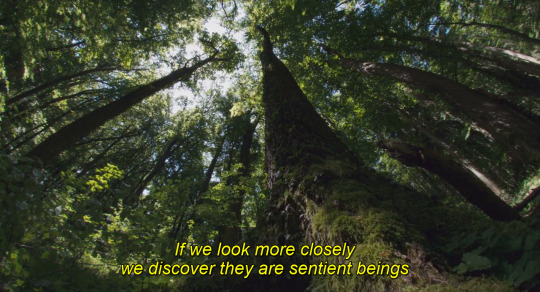
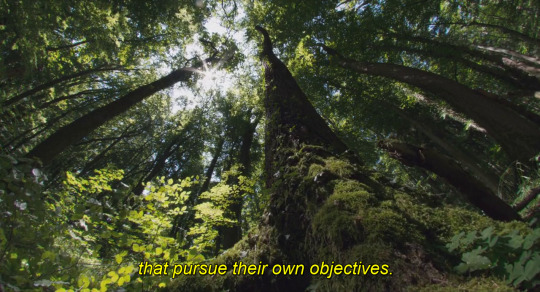
The Hidden Life of Trees, (2020)
#its a fascinating documentary i watched today and it was a good watch#movie scenes#good movie#movie quotes#movie stills#movie aesthetic#movie art#movies#documentary#trees and forests#trees#forest#climate change#climate crisis#global warming#green aesthetic#green#landscape#cinema#cinematography#nature#plants
2K notes
·
View notes
Text

(I learned this from Hank.)
#global health#tuberculosis is not the only health problem#the real health problem is inadequate access to treatment#and fragile healthcare systems#the world's leading cause of death is impoverishment#hank green
4K notes
·
View notes
Text
Previous similar drops in emissions were due to periods of economic stagnation or recession--this is the first significant drop in emissions that has coincided with GDP growth.
The majority of this decline is due to changes in energy use and generation. Coal demand has dropped nearly to 1900s levels, while use of renewables grows significantly--for the first time renewables accounted for half of the energy generated in "advanced economies" included in this analysis.
#good news#hope#ecoanxiety#ecogrief#climate anxiety#climate grief#climate change#global warming#renewable energy#green energy#clean energy#coal#solar#wind energy
838 notes
·
View notes
Text
#biodiversity#conservation#climate adaptation#climate crisis#climate emergency#disaster#deforestation#desertification#desert greening#ecosystem restoration#ecological#food preservation#food security#foodsharing#forests#game preserve#greening#global greening#peace#peacebuilding#reforestation#regeneration#risk reduction#trillion trees#urban greening#palms#vertical farming#water security
1 note
·
View note
Text
"Every single prediction they've ever made has been wrong." Geologist, Prof. Ian Plimer, blows the UN's "human-induced climate change" propaganda completely out of the water.
"They still haven't, after 30 years, shown us that human emissions [of CO2] drive global warming." "There's been a relentless campaign of propaganda for 30 years, and the basics haven't been shown." 🤔
#pay attention#educate yourselves#educate yourself#knowledge is power#reeducate yourself#reeducate yourselves#think about it#think for yourselves#think for yourself#do your homework#do some research#do your own research#ask yourself questions#question everything#climate crisis#global warming#green new deal#lies exposed
577 notes
·
View notes
Text
Unexpected by almost all, here is good climate news from this week! According to calculations by the International Energy Agency, global CO2 emissions may stop rising and even begin falling as soon as this year - yes, this year, 2023. All trends point towards accelerated uptake of renewable electricity, electric vehicles, and while unmentioned in the article, there are technologies like zero-carbon steel and negative-carbon concrete waiting in the wings. And while the path to no more than 1,5C warming remains narrow, there is no runaway warming prospect at 1,5C above preindustrial; in fact, runaway warming without external events is likely impossible, because a warming Earth radiates more heat than it traps (another IPCC finding). In that light, limiting warming to 1,7C (the would-be result of current pledges by all countries) would be almost as effective, and a very good thing. Besides - who's to say that uptake of renewables won't accelerate even more, like they've already beaten every growth prediction in the last few years? So - definitely good news.
#global warming#climate change#climate action#solarpunk#bright green environmentalism#reasons for hope#hope#psa#debunking doomsday#you're doing everything right holmes just keep whacking moriarty over the head
273 notes
·
View notes
Text
"As solar panels heat up beyond 25°C, their efficiency decreases markedly. Green roofs moderate rooftop temperatures. So we wanted to find out: could green roofs help with the problem of heat reducing the output of solar panels?
Our research compared a “biosolar” green roof — one that combines a solar system with a green roof — and a comparable conventional roof with an equivalent solar system. We measured the impacts on biodiversity and solar output, as well as how the plants coped with having panels installed above them.
The green roof supported much more biodiversity, as one might expect. By reducing average maximum temperatures by about 8°C, it increased solar generation by as much as 107% during peak periods. And while some plant species outperformed others, the vegetation flourished.
These results show we don’t have to choose between a green roof or a solar roof: we can combine the two and reap double the rewards...
How did the panels affect the plants?
In the open areas, we observed minimal changes in the vegetation cover over the study period compared to the initial planted community.
Plant growth was fastest and healthiest in the areas immediately around the solar panels. Several species doubled in coverage. We selected fast-growing vegetation for this section to achieve full coverage of the green roof beds as soon as possible.
The vegetation changed the most in the areas directly below and surrounding the solar panels. The Baby Sun Rose, Aptenia cordifolia, emerged as the dominant plant. It occupied most of the space beneath and surrounding the solar panels, despite having been planted in relatively low densities.
This was surprising: it was not expected the plants would prefer the shaded areas under the panels to the open areas. This shows that shading by solar panels will not prevent the growth of full and healthy roof gardens.

What were the biodiversity impacts?
We used environmental DNA (eDNA) surveys to compare biodiversity on the green roof and conventional roof. Water run-off samples were collected from both roofs and processed on site using portable citizen scientist eDNA sampling equipment to detect traces of DNA shed by the species on the roof.
The eDNA surveys detected a diverse range of species. These included some species (such as algae and fungi) that are not easily detected using other survey methods. The results confirmed the presence of bird species recorded by the cameras but also showed other visiting bird species went undetected by the cameras.
Overall, the green roof supported four times as many species of birds, over seven times as many arthropods such as insects, spiders and millipedes, and twice as many snail and slug species as the conventional roof. There was many times the diversity of microorganisms such as algae and fungi.
Encouragingly, the green roof attracted species unexpected in the city. They included blue-banded bees (Amegilla cingulata) and metallic shield bugs (Scutiphora pedicellata).
How did the green roof alter temperatures?
The green roof reduced surface temperatures by up to 9.63°C for the solar panels and 6.93°C for the roof surfaces. An 8°C reduction in average peak temperature on the green roof would result in substantial heating and cooling energy savings inside the building.
This lowering of temperatures increased the maximum output of the solar panels by 21-107%, depending on the month. Performance modelling indicates an extensive green roof in central Sydney can, on average, produce 4.5% more electricity at any given light level.
These results show we don’t have to choose between a green roof or a solar roof. We can combine them to take advantage of the many benefits of biosolar green roofs.
Biosolar roofs can help get cities to net zero
The next step is to design green roofs and their plantings specifically to enhance biodiversity. Green roofs and other green infrastructure may alter urban wildlife’s activities and could eventually attract non-urban species.
Our green roof also decreased stormwater runoff, removed a range of run-off pollutants and insulated the building from extremes of temperature. A relatively inexpensive system provides all of these services with moderate maintenance and, best of all, zero energy inputs.
Clearly, biosolar green roofs could make major contributions to net-zero cities. And all that’s needed is space that currently has no other use."
-via GoodGoodGood, May 12, 2024
#green#green roof#biosolar#solar power#solar panels#rooftop solar#solarpunk#native plants#australia#sydney australia#biodiversity#conservation#climate change#climate action#climate hope#global warming#temperature#climate adaptation#cooling#good news#hope
745 notes
·
View notes
Text


Devastating yet entirely predictable
Source
#global climate crisis#climate action#climate catastrophe#environmental justice#environmentalism#current events#news#global warming#green new deal
765 notes
·
View notes
Text
Another thing I'm really tired of hearing from so-called "Leftists" who say China is the biggest polluter on Earth, completely absurd. The world's biggest polluter by a mile is the United States, and no country on the planet is doing more to develop clean, green energy production and green manufacturing than China.
Historically, the United States has produced the most CO2 emissions globally.


China on the other hand has invested in more than 80% of all clean energy manufacturing on the planet.
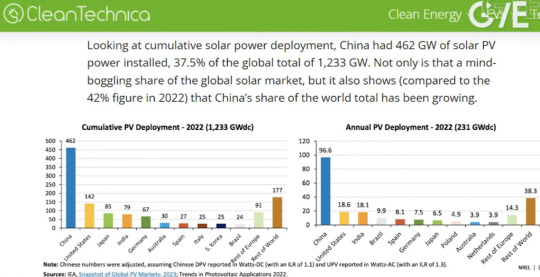
China also produces more Solar power than the next ten countries COMBINED.
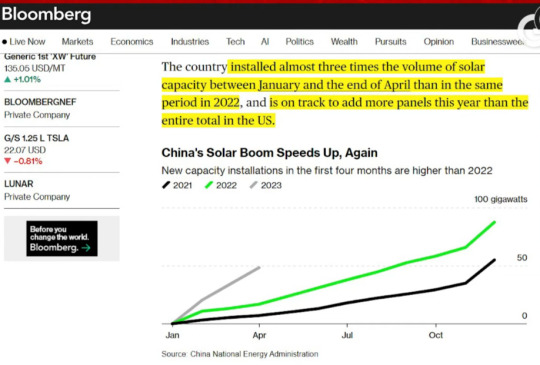
Further, China is on track to produce more solar panels this year than the total installed by the United States in the history of photovoltaic solar panels.
There's just no comparison, China takes Climate Change and green production FAR more seriously than the United States or its allies in the Western bloc.
#china#climate change#green energy#green manufacturing#clean energy#news#geopolitics#geopolitics news#geopolitical events#geopolitical news#international affairs#international news#international politics#world news#global news#politics#socialism#communism#marxism leninism#socialist politics#socialist news#socialist worker#socialist revolution#socialist history#socialist#marxism#communist#worker solidarity#workersolidarity#WorkerSolidarityNews
98 notes
·
View notes
Text
I’m glad people are finally understanding how insufferable European countries are, YOU are the rude stupid ones with a culture of selfishness no one enjoys having visitors from and you’re just as complicit in the worlds problems!
#sweden#swedengate#every ‘nice’ ‘green’ ‘safe’ country is violently exploiting the global south and has been for centuries#edit: bitch I KNOW americas fucked up I live here and actively deal with those issues and educate myself on them#i actively try to educate myself and others#the general culture online from European countries is#well at least we’re not america 🥰#YOU ARE NOT BETTER#and you ppl apparently NEED to be told so
1K notes
·
View notes
Text

She gave me the confidence to use braces so i love her so much and i had to draw her as an excuse for a color practice
Bonus song that i heard while making this ;
#artists on tumblr#fanart#medibang#medibang paint#art#reverse 1999#r1999#reverse 1999 tooth fairy#tooth fairy#a nightmare at green lake#Spotify#can anyone tell me when is she going to have a rerun#in the global server :((#*sigh* i miss my wife tails#i miss her a lot ill be back#apparently its also international womens day so#horray tooth fairy for womens day
42 notes
·
View notes